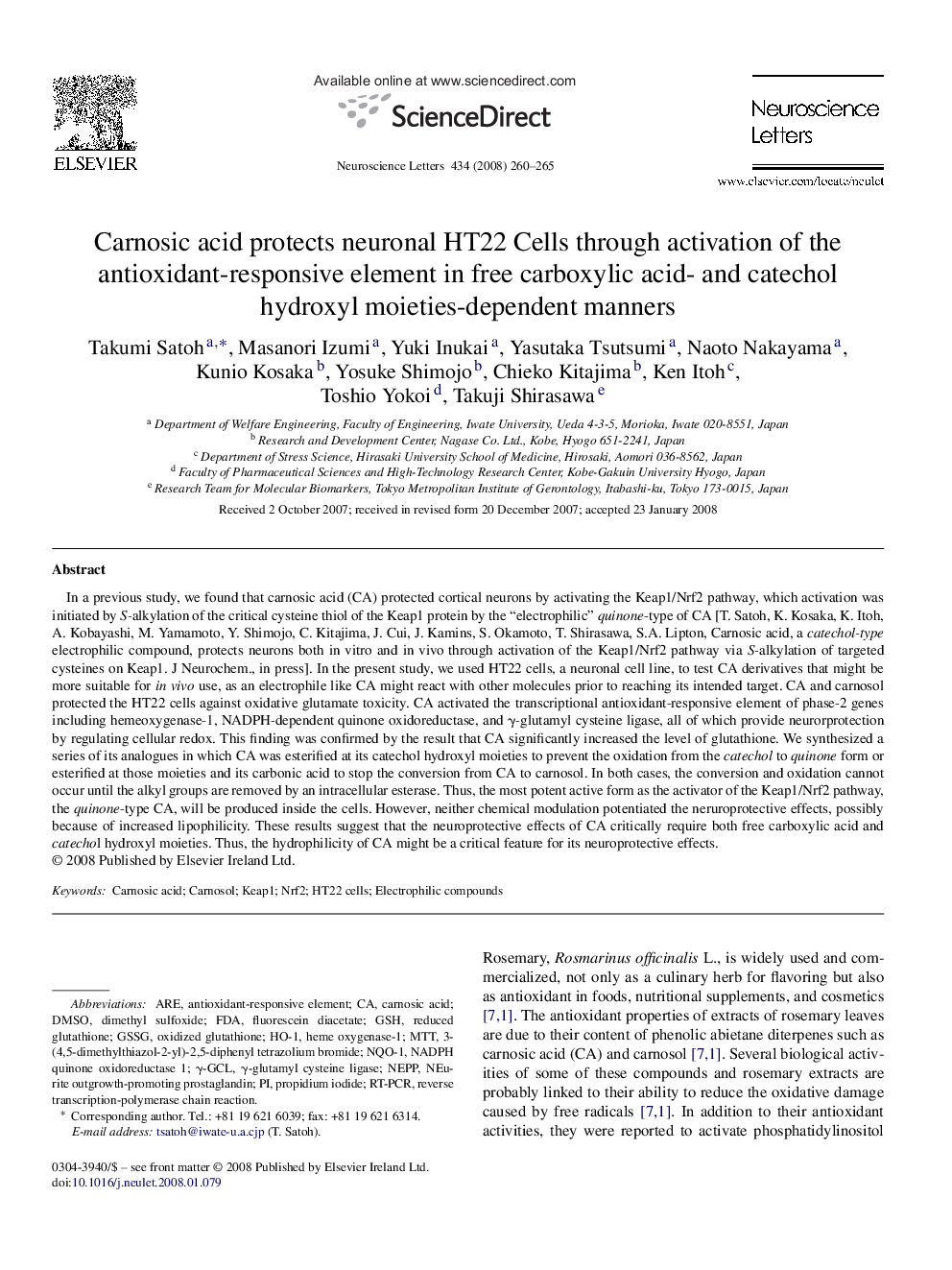| کد مقاله | کد نشریه | سال انتشار | مقاله انگلیسی | نسخه تمام متن |
|---|---|---|---|---|
| 4348568 | 1296895 | 2008 | 6 صفحه PDF | دانلود رایگان |

In a previous study, we found that carnosic acid (CA) protected cortical neurons by activating the Keap1/Nrf2 pathway, which activation was initiated by S-alkylation of the critical cysteine thiol of the Keap1 protein by the “electrophilic” quinone-type of CA [T. Satoh, K. Kosaka, K. Itoh, A. Kobayashi, M. Yamamoto, Y. Shimojo, C. Kitajima, J. Cui, J. Kamins, S. Okamoto, T. Shirasawa, S.A. Lipton, Carnosic acid, a catechol-type electrophilic compound, protects neurons both in vitro and in vivo through activation of the Keap1/Nrf2 pathway via S-alkylation of targeted cysteines on Keap1. J Neurochem., in press]. In the present study, we used HT22 cells, a neuronal cell line, to test CA derivatives that might be more suitable for in vivo use, as an electrophile like CA might react with other molecules prior to reaching its intended target. CA and carnosol protected the HT22 cells against oxidative glutamate toxicity. CA activated the transcriptional antioxidant-responsive element of phase-2 genes including hemeoxygenase-1, NADPH-dependent quinone oxidoreductase, and γ-glutamyl cysteine ligase, all of which provide neurorprotection by regulating cellular redox. This finding was confirmed by the result that CA significantly increased the level of glutathione. We synthesized a series of its analogues in which CA was esterified at its catechol hydroxyl moieties to prevent the oxidation from the catechol to quinone form or esterified at those moieties and its carbonic acid to stop the conversion from CA to carnosol. In both cases, the conversion and oxidation cannot occur until the alkyl groups are removed by an intracellular esterase. Thus, the most potent active form as the activator of the Keap1/Nrf2 pathway, the quinone-type CA, will be produced inside the cells. However, neither chemical modulation potentiated the neruroprotective effects, possibly because of increased lipophilicity. These results suggest that the neuroprotective effects of CA critically require both free carboxylic acid and catechol hydroxyl moieties. Thus, the hydrophilicity of CA might be a critical feature for its neuroprotective effects.
Journal: Neuroscience Letters - Volume 434, Issue 3, 4 April 2008, Pages 260–265